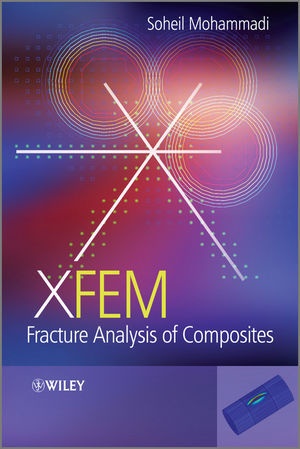Read more
Informationen zum Autor Soheil Mohammadi , Associate Professor, School of Civil Engineering, University of Tehran, Tehran, IRAN Soheil Mohammdi studied for his PhD at the University of Wales Swansea and is now a lecturer at the University of Tehran where his academic career began. He teaches PhD courses in contact mechanics, mesh generation and adaptivity, meshless methods, and impact and explosive loadings on structures. He research interests are based in computational mechanics and finite element analysis, and XFEM. He has published many papers in these areas as well as a book on discontinuum mechanics in 2003. Klappentext This book describes the basics and developments of the new XFEM approach to fracture analysis of composite structures and materials. It provides state of the art techniques and algorithms for fracture analysis of structures including numeric examples at the end of each chapter as well as an accompanying website which will include MATLAB resources, executables, data files, and simulation procedures of XFEM.* The first reference text for the extended finite element method (XFEM) for fracture analysis of structures and materials* Includes theory and applications, with worked numerical problems and solutions, and MATLAB examples on an accompanying website with further XFEM resources* Provides a comprehensive overview of this new area of research, including a review of Fracture Mechanics, basic through to advanced XFEM theory, as well as current problems and applications* Includes a chapter on the future developments in the field, new research areas and possible future applications of the method Zusammenfassung This book describes the basics and developments of the new XFEM approach to fracture analysis of structures and materials, providing state of the art techniques and algorithms for fracture analysis of structures. Inhaltsverzeichnis Preface xiii Nomenclature xvii 1 Introduction 1 1.1 Composite Structures 1 1.2 Failures of Composites 2 1.2.1 Matrix Cracking 2 1.2.2 Delamination 2 1.2.3 Fibre/Matrix Debonding 2 1.2.4 Fibre Breakage 3 1.2.5 Macro Models of Cracking in Composites 3 1.3 Crack Analysis 3 1.3.1 Local and Non-Local Formulations 3 1.3.2 Theoretical Methods for Failure Analysis 5 1.4 Analytical Solutions for Composites 6 1.4.1 Continuum Models 6 1.4.2 Fracture Mechanics of Composites 6 1.5 Numerical Techniques 8 1.5.1 Boundary Element Method 8 1.5.2 Finite Element Method 8 1.5.3 Adaptive Finite/Discrete Element Method 10 1.5.4 Meshless Methods 10 1.5.5 Extended Finite Element Method 11 1.5.6 Extended Isogeometric Analysis 12 1.5.7 Multiscale Analysis 13 1.6 Scope of the Book 13 2 Fracture Mechanics, A Review 17 2.1 Introduction 17 2.2 Basics of Elasticity 20 2.2.1 Stress-Strain Relations 20 2.2.2 Airy Stress Function 22 2.2.3 Complex Stress Functions 22 2.3 Basics of LEFM 23 2.3.1 Fracture Mechanics 23 2.3.2 Infinite Tensile Plate with a Circular Hole 24 2.3.3 Infinite Tensile Plate with an Elliptical Hole 26 2.3.4 Westergaard Analysis of a Line Crack 28 2.3.5 Williams Solution of a Wedge Corner 29 2.4 Stress Intensity Factor, K 30 2.4.1 Definition of the Stress Intensity Factor 30 2.4.2 Examples of Stress Intensity Factors for LEFM 33 2.4.3 Griffith Energy Theories 35 2.4.4 Mixed Mode Crack Propagation 38 2.5 Classical Solution Procedures for K and G 41 2.5.1 Displacement Extrapolation/Correlation Method 41 2.5.2 Mode I Energy Release Rate 41 2.5.3 Mode I Stiffness Derivative/Virtual Crack Model 42 2.5.4 Two Virtual Crack Extensions for Mixed Mode Cases 42 2.5.5 Single Virtual Crack Extension Based on Dis...

